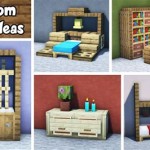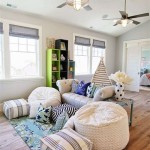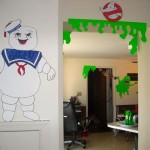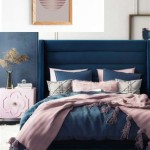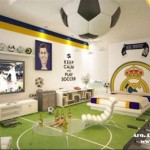3D Printed Bedroom Decor: Revolutionizing Personalization and Design
3D printing, also known as additive manufacturing, has transcended its initial applications in prototyping and industrial manufacturing. It has now permeated the realm of consumer products, offering individuals unprecedented opportunities for personalization and creative expression. The bedroom, a sanctuary of personal space, is increasingly benefiting from the versatility of 3D printing. This technology empowers users to design and create custom decor items that reflect their unique style and preferences, moving beyond mass-produced, standardized options.
The integration of 3D printed decor into bedroom design represents a significant shift in how individuals interact with their living spaces. It allows for the creation of bespoke items, tailored to specific dimensions, color palettes, and aesthetic sensibilities. Moreover, the accessibility of 3D printing technology, coupled with the proliferation of online design resources, has democratized the design process, enabling even those without specialized training to participate in the creation of their personalized bedroom environment.
This article will delve into the various aspects of 3D printed bedroom decor, exploring its potential to transform the aesthetics and functionality of personal spaces. It will cover specific examples of 3D printed items, discuss the materials and technologies involved, and highlight the advantages and considerations associated with this emerging trend.
Customization and Personalization: Tailoring Decor to Individual Tastes
The core appeal of 3D printed bedroom decor lies in its capacity for unparalleled customization. Unlike traditional manufacturing methods, which often necessitate large-scale production runs and standardized designs, 3D printing enables the creation of single-unit items tailored to specific requirements. This opens up a world of possibilities for individuals seeking to express their unique style and personality through their bedroom environment.
One of the most common applications of 3D printing in bedroom decor is the creation of personalized wall art. Users can design custom patterns, incorporate text or images, and choose specific colors and materials to create wall hangings that perfectly complement their existing decor. These can range from abstract geometric designs to intricate reproductions of artwork or photographs. The ability to fine-tune every aspect of the design ensures that the final product is a truly unique reflection of the individual's taste.
Beyond wall art, 3D printing can also be used to create customized lighting fixtures. Lampshades, for instance, can be designed with unique patterns or textures, casting distinctive shadows and creating a specific ambiance within the room. Furthermore, the shape and size of the lampshade can be tailored to fit the existing lamp base, ensuring a seamless integration with the overall design scheme. Similar customization options are available for other lighting elements, such as sconces and bedside lamps.
Another area where 3D printing excels in personalization is the creation of decorative accessories. These can include customized figurines, vases, jewelry boxes, and even drawer pulls. By designing these accessories to match the overall color palette and stylistic theme of the bedroom, individuals can create a cohesive and visually appealing environment. The level of detail achievable with 3D printing allows for the creation of intricate designs and textures, adding a touch of sophistication and elegance to even the simplest accessories.
The ability to personalize extends beyond aesthetics to functionality. 3D printing can be used to create custom storage solutions tailored to specific needs. For example, a bedside organizer can be designed to hold a phone, glasses, and other small items, keeping the bedside table clutter-free. Similarly, custom drawer dividers can be created to optimize storage space and organize belongings efficiently. This blend of aesthetics and functionality makes 3D printed bedroom decor a truly versatile and valuable addition to any home.
Materials and Technologies: Exploring the Options for 3D Printed Decor
The choice of materials and 3D printing technology plays a crucial role in determining the final quality, durability, and aesthetic appeal of 3D printed bedroom decor. A wide range of materials are available, each with its own unique properties and characteristics. Similarly, various 3D printing technologies exist, each suited to specific materials and applications.
One of the most commonly used materials for 3D printed bedroom decor is polylactic acid (PLA), a biodegradable thermoplastic derived from renewable resources such as corn starch or sugarcane. PLA is known for its ease of use, low printing temperature, and relatively low cost. It is suitable for a wide range of decorative items, including wall art, figurines, and lampshades. However, PLA is not particularly heat-resistant or impact-resistant, making it less suitable for items that will be exposed to high temperatures or significant stress.
Another popular material is acrylonitrile butadiene styrene (ABS), a petroleum-based thermoplastic known for its strength, durability, and heat resistance. ABS is often used for creating functional items such as drawer pulls, storage containers, and other accessories that require a higher level of durability than PLA can provide. However, ABS is more challenging to print than PLA, requiring higher printing temperatures and a well-ventilated environment to minimize the emission of fumes.
Beyond thermoplastics, other materials are also gaining popularity in 3D printed bedroom decor. These include nylon, a strong and flexible material suitable for creating items that need to withstand repeated bending or stretching; polycarbonate, a highly impact-resistant material ideal for creating protective cases or durable accessories; and even wood-filled filaments, which offer the aesthetic appeal of wood with the design flexibility of 3D printing.
The selection of the appropriate 3D printing technology is equally important. Fused deposition modeling (FDM), also known as fused filament fabrication (FFF), is the most common and affordable 3D printing technology. FDM printers work by extruding molten plastic filament layer by layer, building up the object from the bottom up. This technology is suitable for a wide range of materials, including PLA, ABS, and nylon.
Stereolithography (SLA) is another 3D printing technology that uses a laser to cure liquid resin layer by layer. SLA printers offer higher resolution and smoother surface finishes than FDM printers, making them ideal for creating intricate and detailed decorative items. However, SLA printers are generally more expensive than FDM printers, and the range of materials that can be used is more limited.
Selective laser sintering (SLS) is a powder-based 3D printing technology that uses a laser to fuse powdered materials together layer by layer. SLS printers can handle a wider range of materials than FDM or SLA printers, including nylon, metal, and ceramics. However, SLS printers are typically more expensive and complex to operate, making them less accessible to home users.
Advantages and Considerations: Weighing the Benefits of 3D Printed Decor
The adoption of 3D printed bedroom decor offers several advantages, but it also presents certain considerations that need to be addressed. Understanding these factors is crucial for making informed decisions about incorporating 3D printing into the design of personal spaces.
One of the primary advantages of 3D printed decor is its cost-effectiveness, particularly for small-scale production runs and customized designs. While the initial investment in a 3D printer can be significant, the cost per item is often lower than traditional manufacturing methods, especially for unique or personalized pieces. This allows individuals to create custom decor items without incurring prohibitive costs.
Another advantage is the reduced waste associated with 3D printing. Unlike traditional manufacturing methods, which often generate significant material waste, 3D printing only uses the amount of material necessary to create the object. This minimizes waste and promotes a more sustainable approach to manufacturing. Furthermore, the use of biodegradable materials such as PLA can further reduce the environmental impact of 3D printed decor.
The speed and efficiency of 3D printing are also noteworthy. Once a design is finalized, 3D printing can produce the object relatively quickly, often within a matter of hours. This allows for rapid prototyping and iteration, enabling individuals to experiment with different designs and make adjustments as needed. The ability to quickly produce custom decor items can be particularly valuable for interior designers and decorators who need to meet tight deadlines.
However, there are also certain considerations associated with 3D printed bedroom decor. One of the primary limitations is the size of the objects that can be printed. Most desktop 3D printers have a limited build volume, which restricts the size of the items that can be created. This can be a significant constraint for individuals who want to create larger decor pieces, such as large wall hangings or oversized lampshades.
Another consideration is the surface finish of 3D printed objects. FDM printers, in particular, often produce objects with visible layer lines, which can detract from the aesthetic appeal. Post-processing techniques, such as sanding and painting, can be used to improve the surface finish, but these require additional time and effort. SLA printers offer smoother surface finishes, but they are generally more expensive.
The durability of 3D printed objects can also be a concern, depending on the material used and the intended application. PLA, for example, is not particularly heat-resistant or impact-resistant, making it less suitable for items that will be exposed to high temperatures or significant stress. Choosing the appropriate material and 3D printing technology is crucial for ensuring the longevity and durability of 3D printed bedroom decor.
Finally, the availability of design resources and the ease of use of 3D printing software can be a barrier for some individuals. While there are many online resources available, learning to design and prepare 3D models for printing can require some technical expertise. However, the increasing availability of user-friendly design software and online tutorials is making the process more accessible to a wider audience.
In conclusion, 3D printed bedroom decor represents a significant advancement in the realm of personalization and design. Its capacity for customization, coupled with its cost-effectiveness and reduced waste, makes it an attractive option for individuals seeking to create unique and personalized living spaces. While certain limitations and considerations exist, the ongoing advancements in materials, technologies, and design resources are continually expanding the possibilities for 3D printed bedroom decor.
20 3d Print Ideas For Your Bedroom Nikko Industries

3d Splash Wall Art Decor Printing Model Sculptures Resin
20 3d Print Ideas For Your Bedroom Nikko Industries

Multicolor Bright Wall Decor 3d Effect Art Canvas Print Poster Bedroom Set

3d Wallpapers For Walls Custom Ball Photo Mural Wallpaper Living Room Bedroom Decor Simple Murals

Original Grey 3d Print Hexagon Whole Mural Wallpaper For Coffee And Bar Wall Decor Clearhalo

Wall Hanging 3d Printed Waterfall Forest Tapestry Dorm Room Bedroom Decor 200x150cm

3d Printable Formula Track Time Table 2025 Wall Decor Print Model

Daybetter Moonlight Night Light For Kids S 4inch 3d Printing Moon Lamp Bedroom Decor 16 Color

Unique Table Lamps For Bedroom Artistic Astronaut Resin Desk Light With 3d Printed Lampshade Modern Decor Living Room
